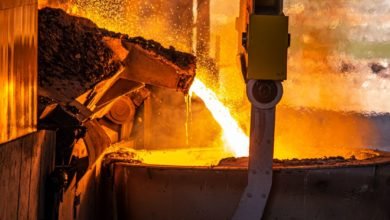As Misinformation Reigns, Now Is The Climate Of Our Discontent
Find a plant – any plant, although a tree is good. Go ahead, I’ll wait. Good, now stand back and take a good look at it. Look at how tall it is, how big around. Consider that, as a rule of thumb, there is as much plant below the ground as there is above it.
Now get close. Feel the stem or trunk. Notice how sturdy it is. Touch the leaves and notice how delicate yet how strong they are. Take a moment, and realize that the entire plant is made of air. More specifically, it is made of something that forms a tiny fraction of air. Sure, there is water there, and a few minerals from the soil, but really, nearly all of it is made of air.
Awesome, no?
A little water, a lot of air, some sunlight, some complex biology, and voila’ – a plant. Everyone who had a high school science class has heard of photosynthesis. You know, that process that happens in plants where plants take in carbon dioxide from the air, add sunlight, and release oxygen. What happens to the carbon, though?
That clever little plant takes the CO2 from the air, adds some hydrogen from water, produces a little excess oxygen, and makes a variety of sugars from the carbon, mostly ones known as glucose. In most plants, some of that glucose is linked into long chains to make cellulose which forms stems, seeds, and other structures. A lot of people think that plants get their building material from the soil. Not so! Plants only get water from the soil, along with a few minerals.
The majority of the plant is made from the CO2 in the air. That includes all the seeds, grains, fruits, vegetables, nuts, sugars, fiber, and most everything else we eat. Even meats are produced by animals that eat plants. Without CO2, we would all starve, because the plants would starve. No plants, no plant foods, no animals, no humans, even no fish because they depend on aquatic plants that depend on CO2 dissolved in water.
So what is the problem?
So now we have a bunch of people convinced that CO2 is a toxic substance that is causing all sorts of problems and that we need to reduce, and even eliminate it from the air. We need to capture it, bury it, inject it into deep wells, and eradicate it so we can have healthy air. Little do they consider that if they actually succeeded in removing CO2, the earth would be devoid of life. Earth would look like Mars, or the Moon – dry, lifeless, dead.
OK, they say, maybe we need some, but we have too much so we need to reduce it. Why, you might ask, do they think we have too much? How much do we have, and how much is too much?
As for the first question, some people are concerned that the climate is changing to make the Earth less hospitable to humans. They are of the opinion that the change is caused by increases in atmospheric CO2 due to human use of fossil fuels. We will get to that claim in a bit, but first we need to know a bit more about just how much CO2 we are considering.
Just how much CO2 are we talking about
The current concentration of CO2 in the atmosphere is about 420ppm (parts per million) at sea level. That declines by about one-third in the upper atmosphere, so most of the CO2 is concentrated in the lower atmosphere near the Earth’s surface. In most of the pictures we see about the distribution of CO2 in air, it is presented as something of a layer high above the surface, reflecting heat back to the Earth’s surface, something like a blanket covering the Earth. That is seriously misleading, as we shall see.
For our purposes now, we can assume that CO2 is uniformly distributed in the atmosphere as that won’t affect the discussion significantly. I will also use English units, and will leave metric calculations as an exercise to science students.
Atmospheric pressure at sea level is 14.7 pounds per square inch or just over one ton per square foot. By an amazing coincidence, there are 14.7 pounds of atmosphere above every square inch of the Earth at sea level. If we were talking about water, that would be a stack of water 33 feet tall, roughly the height of a three-story building. Water weighs about 64 pounds per cubic foot, so that stack of water on a square foot of surface would weigh the same as air over a square foot.
At 420ppm, the CO2 content of that stack of air works out to just under 0.9 pounds. If it were water, that CO2 would be just short of a pint. So we have a pint of water representing the CO2 in the air in 33 cubic feet of water. Converting to gallons, we would have a pint in 264 gallons. That doesn’t sound like much, and it isn’t. That is what 420ppm means, though.
So what does that mean?
Now the claim of those concerned about climate change is that the CO2 in the air is absorbing the heat radiated from the Earth and keeping it from escaping to space, thus causing the Earth to heat up. Sunlight falling on the Earth causes the surface to heat up. That heat is radiated out from the surface in the form of infrared energy – just another form of light that is slightly lower frequency (longer wavelength) than the visible light we see. We know from both theory and experiment that CO2 absorbs a lot of infrared energy and heats up. Does that mean that those concerned about climate change are right about the danger of CO2?
To answer that, we need to look at how absorption works. Light absorption depends on three things: the wavelength of the light – its color you might say, the concentration of the absorbing material, and the distance light must travel through the absorber – what is called the path length.
Light exists in little packets of energy called photons. In order to be absorbed, that photon has to actually strike an absorbing molecule. If the concentration of absorbing molecules is low, the photon may never encounter one on its travels along its path. This is the case with CO2 in the atmosphere. At 420ppm, only about one molecule in 2,500 will be CO2. All the rest are nitrogen, oxygen, or a few other gasses. There is a good chance that an infrared photon will escape into space without being absorbed. This is quite a different picture from what the climate concerned would paint, where all the infrared energy gets absorbed.
To illustrate this, we can go back to our water comparison – remember the 33-foot tall stack of water? Out of that, there was just under a pint that would be CO2. Take that pint and fill it with the blackest ink you can find. The ink is black because it is a strong absorber of light. Now dump that pint of ink into the water stack and mix thoroughly. What happened to the ink?
You can try something similar at home by putting a drop of ink into a gallon of water. Do you notice an effect? Does the ink disappear in the large volume of water? With sensitive instruments, I can detect the ink, but it is otherwise almost invisible. That is the same situation with CO2 in the atmosphere. With such a low concentration of CO2, the atmosphere is almost completely transparent to most wavelengths, including infrared light. Nitrogen at about 78% and oxygen at about 21% absorb far more light than CO2, and even those only reduce sunlight by a few percent.
Why all the concern?
This gets us back to the question of how much is too much? Our current level of 420ppm seems ok. Farmers who grow fruits and vegetables in hothouses will usually increase CO2 levels up to 1200 to 1500ppm because plants grow faster and are healthier with more CO2. People who work in those hothouses are just fine with those levels. When we breathe, we take in oxygen and exhale CO2. The concentration of CO2 in our exhaled breath is about 38,000ppm. That level would be a bit high for continued breathing, but if CO2 really were toxic, our breath would kill us.
During the age of dinosaurs, an average level was about 900ppm, or over twice the concentration today. In those times, the Earth was generally warmer than today – mostly tropical or semitropical as far as we can tell. Picture Europe with palm trees and a climate like Hawaii. Ocean and atmospheric circulation act to spread heat from the equatorial regions out toward the poles, so the tropical regions would be about as warm as they are today, while the more temperate regions would become semi-tropical or tropical.
During even earlier periods such as the Cambrian, it has been estimated that CO2 levels were even higher, perhaps at 8,000 to 9,000ppm, over 20 times higher than today. This was a period of lush plant growth across the world. Many of the coal deposits, which are simply layers of compressed dead plants, were laid down in this period.
Looking at the data, it would appear that there is a correlation between CO2 levels and temperature, at least for present times, but that correlation does not seem to hold up over longer time scales. If true, though, that increases in CO2 lead to higher temperatures, then that explains much of the concern about increased levels of CO2.
We can see that there has been a huge range in CO2 levels throughout history. Many of the higher levels are associated with fairly pleasant and fertile warm periods that covered most of the Earth. It would seem that if there is a relationship, then higher CO2 levels would be desirable. So what is the problem?
We’re doomed, doomed, I say!
If CO2 increases, the sea levels will rise, the oceans will boil, the little girl from Sweden will drown when her boat capsizes, and we will all be fighting over mountain tops above the new sea level. While a bit of an exaggeration, this seems to encapsulate most of the concern around elevated CO2 levels – they would cause the sea levels to rise and flood much of the Earth’s surface.
How far would temperatures have to rise before there would be significant increases in sea level? Al Gore predicted that sea levels would rise as much as 20 feet when the polar ice caps melted. While it is true that if all polar ice melted, there would be a significant rise in sea levels, what would it take in terms of a temperature rise to melt them?
To answer that, we first need to get clear that not all ice is created equal. There is floating ice and land-based ice. Floating ice can melt all it wants and there will be no increase in sea levels. This is because ice that is floating has already displaced its weight in water. The principle goes back over 2000 years to Archimedes who, it is claimed, used the idea to determine that his king was being cheated by the maker of a new crown.
The north polar ice cap is entirely floating, so it can and does melt without effect on sea levels. Most of the ice around Antarctica is also floating and also has no effect on sea levels when it melts.
Land-based ice is a different story. There are two major reservoirs of land-based ice – Greenland, and Antarctica. Together, they contain enough water in the form of ice to raise the sea levels many feet. But what would it take to melt them?
Looking at Antarctica, even in the summer, temperatures are below zero Celsius – the point at which water freezes. Only the most remote margins rise above freezing, and those are where almost all the ice is in the form of massive floating ice sheets. The interior, where most of the land-based ice is found never gets above -30 C. Global temperatures would have to rise 10 to 15 degrees C before you would get significant melting in the center of the continent. That magnitude of rise would put the global average near the maximum estimated for any time in Earth’s history – even warmer than the dinosaurs enjoyed.
According to most estimates, if we were to double the amount of CO2 in the atmosphere, the global average temperature would only rise between 1.5 and 4.5 C – far below the point where we would get any significant melting of Antarctic land ice. There would be some sea-level rise due to water expansion as the sea temperatures rose, but it would be nowhere close to Mr. Gore’s prediction.
An interesting graph in the above link shows CO2 levels over the last 800,000 years. Each of the peaks and valleys in the graph represents ice ages. During the low points of each ice age, the CO2 levels approached a critical level near 150ppm. That level is critical because it is the point at which plants don’t have enough CO2 to survive – they suffocate. If we ever reach that level, Earth will die.
So what about Greenland? Temperatures can get a bit warmer in Greenland, although the center is still very cold, even during summer. There is melting around the edges, but those are mostly dry land with only seasonal snow. During the peak of summer, temperatures in the center of Greenland where the ice is deepest are typically below minus 10 to 15 C. As with Antarctica, temperatures would have to rise more than 10 degrees C before there would be significant melting of Greenland ice. Just as a note, some of the oldest ice obtained from ice core drilling is from the center of Greenland where the ice is nearly a million years or older.
If it would have to get a lot warmer before there would be enough ice melt to raise sea levels significantly, what is all the fuss about? It would appear that if temperature is indeed controlled by CO2, then more CO2 would mean that most of the world would enjoy a more pleasant climate, sea levels would be close to what they are today, and there would be lots more greenery, which means more food and less starvation in the world. We might even see the Sahara Forest restored. What’s not to like?
As it turns out, a lot.
Politics, not science
A bit of history is in order. Like many of my generation, I read Rachel Carson’s Silent Spring. It is good propaganda and poor science but was very influential. It led to the worldwide banning of the pesticide DDT, condemning millions of people to death from malaria which DDT use had nearly eradicated.
Later came Ehrlich’s book The Population Bomb, and then Limits to Growth. While there were many critics of these works, notably Julian Simon among many others, .people tend to be more attracted to bad news than good so the disaster scenarios powered much of the growth of the environmental movement of the ’70s and ’80s. These times were the breeding ground for many of the hard-core environmentalists, aka greens, of today.
I first encountered some of these people while I was in graduate school. I was struck by their misanthropic attitude – humans were a cancer on the face of the Earth, there were far too many humans, and our numbers had to be drastically reduced to save the planet. These attitudes drive much of the environmental movement today.
Where, then, does CO2 enter? From the environmentalist standpoint, CO2 is purely the Devil’s work. Cheap energy in the form of safe and readily available fossil fuels has led to huge decreases in world poverty as it makes food, transportation, and economic growth possible for dozens of third-world countries. Modern fertilizers produced using fossil fuels have increased food production and availability by several times. Increases in atmospheric CO2 have increased plant cover and food production by at least 30% worldwide.
Most of our electricity is produced from fossil fuels, our transportation is almost entirely fossil fuel-based, our agriculture is heavily dependent on fossil fuels for fertilizers, distribution, irrigation, and operations. Fossil fuels are essential to our civilization in a myriad of ways, far beyond electricity generation.
For the environmentalist, all of these things that most of us would consider boons, are horrible since they support large populations, and even support increases in population. If the world is ever to be saved, fossil fuels have to be eliminated.
He who controls CO2 controls the world
Enter Maurice Strong. After an early start as an oil entrepreneur in Canada, he became an influential environmentalist and international bureaucrat. Among other things, he was important in forming the UN Inter-governmental Panel on Climate Change (IPCC). He realized early on that fossil fuels were essential to modern civilization and were key to the support of large populations.
Virtually all uses of fossil fuels ultimately result in production of CO2. By convincing governments that CO2 was harmful – even toxic – and needed to be regulated and reduced, the ability to sustain large populations could be correspondingly reduced. Thus began the demonization of CO2 and fossil fuel use.
Never let a good crisis go to waste – even if you have to invent one
As of today, an intense propaganda campaign against CO2 and fossil fuels has convinced a large portion of the global population that CO2 is harmful and must be reduced to prevent an imagined climate catastrophe. Every natural change in weather patterns, every longer-term change in temperature, rainfall, storms, and just about any weather-related events is attributed to increased levels of CO2, often without any clear causal linkage. Governments worldwide are acting to reduce fossil fuel use without considering the impacts that will have on their economies and the well-being of their populace. The current emphasis on “alternative energy sources” denies the realities of their development, deployment, environmental effects, national security, and a host of other issues.
Ultimately, reductions in CO2 through reduced fossil fuel use will serve the misanthropes by reducing the ability of our civilization to support large populations. By creation of the specter of a future crisis, current populations are manipulated into support of immensely destructive policies while being led to think they are doing good. Many African nations see, with considerable justification, the current climate change activism as a way for first-world nations to keep Africa from developing by keeping it poor and dependent. Elimination of low-cost energy in the form of fossil fuels will cast billions of people back into poverty, starvation, war, disease, and death. More electricity can only enslave them, not save them.
I support development of alternative energy sources, notably Gen IV nuclear systems, orbital power systems, and improvements in energy efficiency. There are even ways to marry systems together to make our current fossil fuels renewable. I don’t support the current climate scare tactics to manipulate people into supporting bad policies. It is instructive that all the proposed “solutions” to the “Climate Crisis” involve increases in government power and restriction of individual freedoms and liberties. The current “Green New Deal” is more of a “Green Raw Deal”.
Isn’t it time we stepped back, invited truth into the room, and took a hard look at where we are going?
Content syndicated from TheBlueStateConservative.com with permission.
Agree/Disagree with the author(s)? Let them know in the comments below and be heard by 10’s of thousands of CDN readers each day!






The author of this article, David Robb, and others who often post in the American Thinker, are paramount in supporting those of us that truly need the absolute truth in matters of our daily lives, to be able to carry on. The ability of those that can contribute this kind of clarity in simple and understandable terms is a gift. I would hope that we never give up in our quest for the truth… no matter how many are laughing or condemning that quest in today’s world.